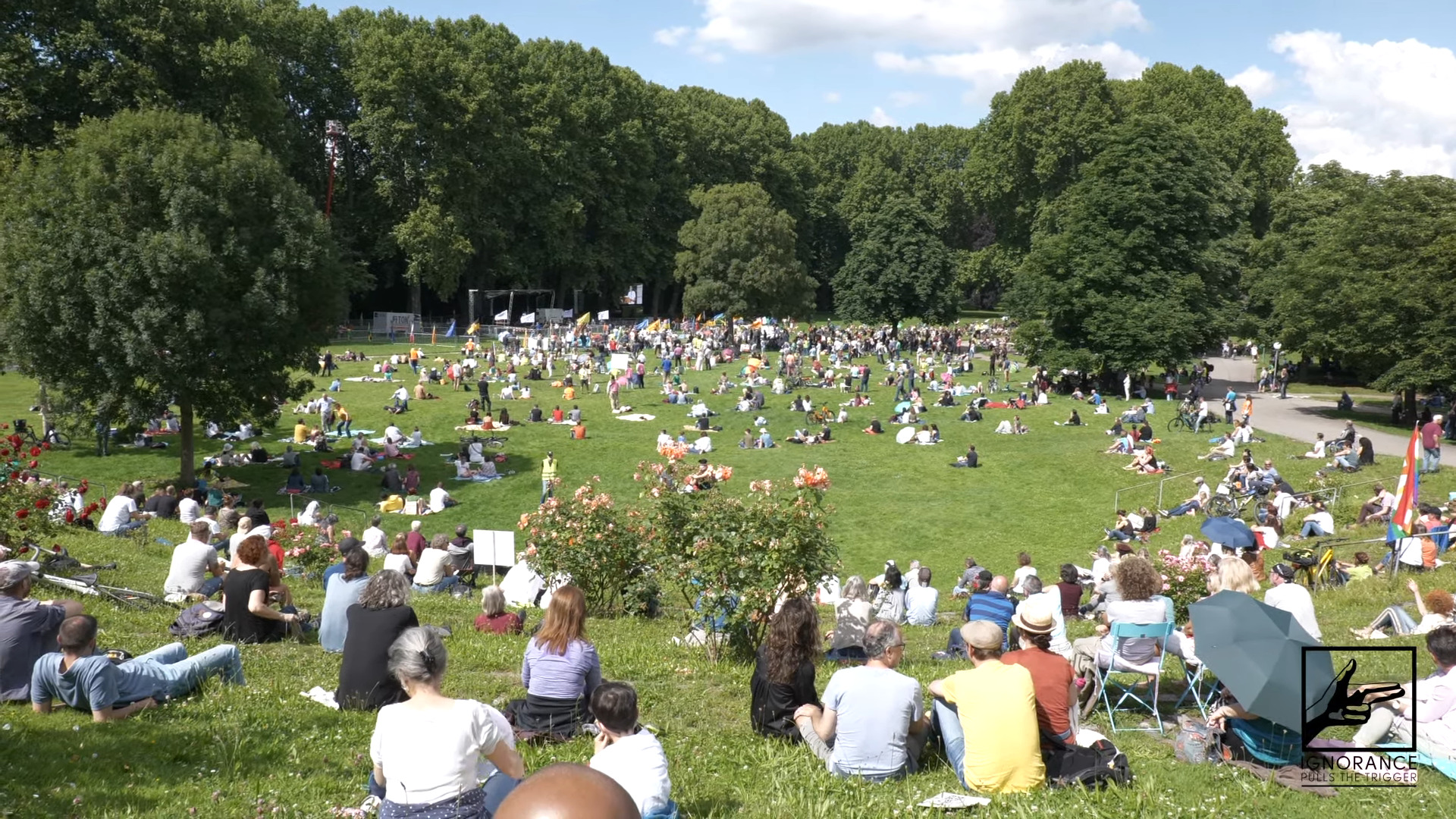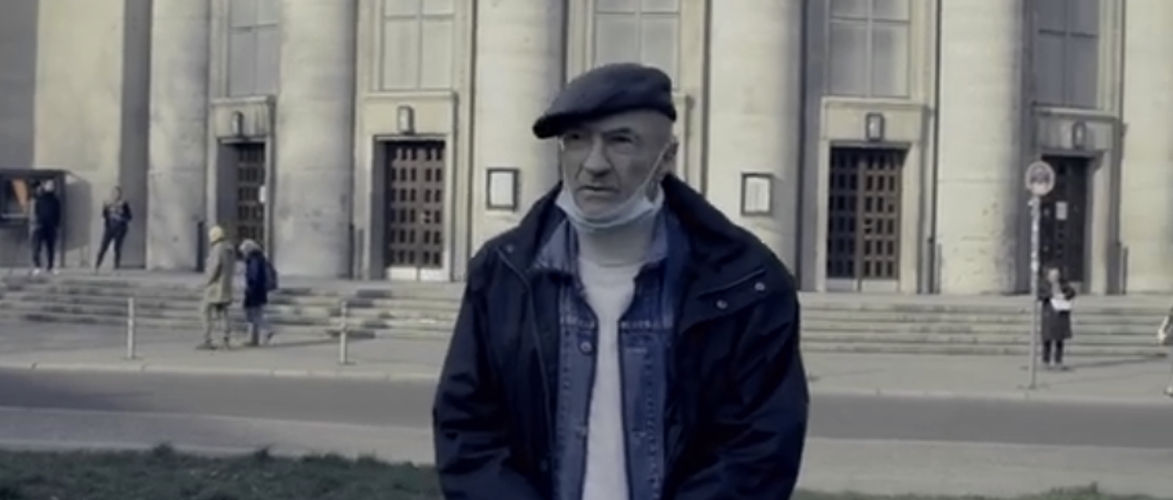…but part of the war against blacks in the USA
By Hermann Ploppa.
Even after the murder of US citizen George Floyd by a Minneapolis police station employee, violence against African Americans continues uninterrupted. Overall, the current civil war raging in the United States is clearly a violent reaction to the historically unique regime, which has been exercised with relentless severity since the outbreak of the Corona pandemic. When, as a result of the pandemic, over 20 million people in the USA lose their jobs from one day to the next and have hardly any significant savings, such revolts are the logical consequence. And they have certainly been taken into account by the ruling class.
The fact that the social explosion was nevertheless ignited by a racial conflict is almost inevitable. For to this day, US citizens of African origin are still over-represented among the unemployed, the poor and the incarcerated. They are also now over-represented among the corona infected. They are also over-represented among those who lost their jobs due to Corona. In a country where twelve US presidents were slave owners, it took a long time before blacks were granted full civil rights, at least on paper. Many institutions of the USA can still be traced back to slavery in the USA. Even the decentralized police stations, the police departments, often started out as slave patrols. In other words as citizen militias who recaptured slaves who had escaped.
In addition, over the course of the centuries, different peoples immigrated to the USA one after the other and were initially all looked at with suspicion by those already resident. These new immigrants liked to distinguish themselves by actively participating in violence against African-Americans, thus creating a „we-feeling”.
In my book “Hitlers amerikanische Lehrer” I have examined the dynamics of this restless “melting pot” in order to explain the emergence and effects of racism and fascism.
On this occasion a short excerpt from the book mentioned above:
(translation)
„Until the 1920s, about 3,500 African Americans, but also Irish, Italians and Jews, became victims of lynching. In the era of slavery, there were self-proclaimed “Slave Patrols” – slave patrols who picked up, hung or “only” whipped every Afro-American on the street.
This custom continued even after the liberation of the slaves. In the opinion of these self-appointed guardians of law and order, the state did not take proper action, so that the citizens themselves had to help. This vigilante justice reveals a distinctly sexual-neurotic side. The manhood delusion of the white, powerless macho has to react to a defenseless victim.
Because mostly young black men are victims of the lynch-“justice”. The teenagers are accused of raping or even killing respectable white women from the community. The view that the “Negro” is much more potent and instinctive than the white man, blessed with a much larger sexual organ, but with a somewhat deficiently equipped brain, is not only to be found at southerners gatherings, but also in the written statements of the intellectual luminaries of the elite universities of Yale, Harvard and Princeton, who, by the way, spoke out vigorously against the liberation of slaves.
And the respectable citizens develop an amazingly sadistic inventiveness. They don’t just kill the victim. They torment it by every trick in the book.
For example, in 1916, Jesse Washington of Waco, Texas.
A seventeen-year-old mentally retarded African-American who earns his living as a farm worker. Supposedly, he has already confessed to raping and killing a white woman. He is dragged into the marketplace, castrated and mutilated. In front of a cheering crowd, even under the benevolent eyes of the mayor and the police chief, the boy is beaten with shovels and bricks are thrown at him. A fire is started. The boy is hung on an iron chain and roasted over the fire.
Crying, Jesse tries to climb up the red-hot chain. To prevent this, they laughingly chop off his fingers. Finally, Jesse Washington is hanged. A photograph of this torment is circulated as a postcard. On the back of such a postcard a humorous citizen of Waco writes: “We had a barbecue last night“.
This is not an extreme case.
One could fill whole libraries with reports of such perversions. Lynching was concentrated in the southern states of the USA, but was also practiced to a smaller extent in the north. Public lynching is often a social event. In times when executions in Europe are only discreetly carried out behind prison walls or are completely forbidden, freestyle executions are popular social events in the USA.
The local reporter is informed before the event and the lynching is set to a certain time so that the reporter can place his report with photo in the local press. The secondary use of the lynching photo as a postcard is a sought-after source of income for the clever reporter. The sending of lynch postcards reaches such a scale that the US Post Minister officially forbids sending them by mail in 1908. Lynch is also professionally executed in circus arenas, neatly illuminated the same way as at a rock concert.
Even President Theodore Roosevelt, who considers “Negroes” to be an “incurably stupid race”, is horrified by the lynching fashion in 1903: “All thinking people … must feel grave concern about the increase of lynching in this country, and especially about the select repulsive dimensions which the violence of the mob often assumes when coloured people are the victims – whereby the mob attaches less importance to the criminal’s crime than to the colour of his skin …”. (Open letter to the Governor of Indiana, Winfield Durban)
This is not only costing Roosevelt votes. Increased personal security is also needed. Roosevelt never initiated a law against lynching either.
In 1946, for the first time in the history of the USA, a lynch master is legally held responsible. Florida policeman Tom Crews is to pay a $1,000 fine and a year in prison for killing a black farm worker by lynching. The brave law enforcement officer probably didn’t understand the world anymore…
Lynchings can affect individuals who have attracted the attention of a village community for some time. In addition to sexual pathological motives, it can also play a role that a black person opens a butcher’s shop in a place where a white butcher already runs a business. Or one wants to take over the property of a black citizen.
In addition to the lawless execution of individuals, there is also the slaughter and execution of the inhabitants of an ethnic neighborhood. The aim is to aggravate and remove a supposed parallel society. Not only do seemingly spontaneous explosions of an intolerant majority against an ostracized and feared minority occasionally occur. These thunderstorms are indispensable instruments of pressure equalization in the US society that never comes to rest. And over the centuries, African Americans have remained the preferred target of these discharges, which can easily be described as pogroms.
And not pogroms laboriously staged by paramilitary SA units without the participation of the people. Instead, they are spontaneous pogroms born of genuine need.
Five examples should be sufficient.
1. The New York Draft Riots from July 13 to 16, 1863. For the civil war, the northern states forcibly enlisted soldiers. For 300 dollars you can buy your way out of the draft if you hire a replacement. The little people are rightly angry. They rant, “This is the rich man’s war, and the little man has to fight it out.” Riots break out. In New York, the riots escalate into revolt. President Lincoln quells the uprising with regular troops. The insurgents are changing the subject. They storm the residential areas of African-Americans, set fire to houses and massacre residents. The surviving blacks find shelter in Harlem, then not yet part of New York.
2. The conversion of a socially motivated rage into blind racial mania was also successful in Louisiana in 1887. 10,000 workers on sugar plantations, black and white together, strike for higher wages. Louisiana Governor Samuel Douglas admonishes the white strikers: “God Almighty himself has drawn a racial line!” Douglas first unleashes military on the strike front. When a racist lynch mob is formed, the governor withdraws his troops so that the mob can indulge its passion undisturbed. Three hundred blacks are lynched in one strike.
Not only because of such traumatic experiences, more and more blacks are moving to the Northern States. There, however, they arouse displeasure. The white workers fear the blacks as possible cheap competition on the labour market. Of all people, the workers of East St. Louis, who in the past had carried out labor struggles that were as prudent as they were successful, see red in World War I, when more and more African Americans find work in the metal factories.
3. At a workers’ meeting on May 28, 1917, interested circles succeed in launching rumors that are both malicious and nonsensical. Once again the sexual-neurotic card is played: a fraternization between black men and white women on a large scale was just about to happen. 3,000 raging macho workers march through the city and beat up every black man they get hold of. They set houses on fire. First, the National Guard manages to put an end to this nonsense. However, new rumours are circulating: “the blacks” are planning a thoroughly organised raid. On July 1st, when an African-American fires a warning shot to defend himself against the attack of a white attacker, the situation escalates. Completely frightened, the black man shoots two policemen. The next morning a white mob stormed the black residential area and set fire to houses. The pipes of the fire engines are cut. People fleeing from the burning houses are shot down like clay pigeons. “Southern niggers deserve a stylish lynching!” Now the guardsmen are joining in.
4. In 1919, the African-American Eugene Williams paddles around in the waters off Chicago. …where he finds himself in what white folks see as their territory. A white man on the bank hits Williams with a rock to the head. He loses consciousness and drowns. African Americans who have witnessed the incident ask a police officer standing by to arrest the stone thrower. The policeman does nothing. The blacks get violent with the policeman. This prompted a white mob on July 27, 1919, armed with baseball bats, to enter African American homes to kill and pillage. When the 6,000 National Guardsmen finally get a grip on the pogroms on 30 July, they are left by the wayside: 38 dead, 537 injured. A thousand Chicagoans are left homeless. The African-Americans are fighting back.
5. In Tulsa, Oklahoma, in 1921, the black, nineteen-year-old Dick Rowland is remanded in custody on suspicion of assault. A white mob gets Rowland out of prison to lynch him. A group of African Americans stand in their way. A fight breaks out. A black war veteran shoots a white man. The response of the white majority is quick. In the black community, 1,256 houses and 200 shops are burned. The hunting party: 39 dead. 26 black and 13 white. This time white people used planes to shoot at black people and bombard their victims with sticks of dynamite.“
We could go on as we please. But this is certainly enough to show the magnitude of this endless and relentless race war in a seemingly civilized country.
+++
Thanks to the author for the right to publish.
+++
Image source: Olga Enger / shutterstock
+++
KenFM strives for a broad spectrum of opinions. Opinion articles and guest contributions do not have to reflect the views of the editorial staff.
+++
KenFM now also available as a free app for Android and iOS devices! Via our homepage you can visit the stores of Apple and Google. Here is the link: https://kenfm.de/kenfm-app/
+++
Support us with a subscription: https://www.patreon.com/KenFMde
+++
You like our program? Information about further support possibilities here: https://kenfm.de/support/kenfm-unterstuetzen/
+++
Now you can also support us with Bitcoins.

BitCoin address: 18FpEnH1Dh83GXXGpRNqSoW5TL1z1PZgZK










Kommentare (0)